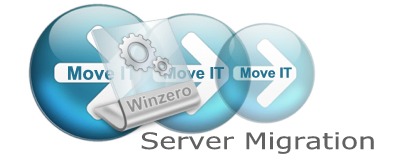To reduce server migration risks and known issues, I have compiled a checklist of items that need to be addressed prior to migrating servers or server data from one server to another.
Windows Server Migration Checklist
Verify that the account performing the migration has administrative rights to all servers involved in the migration.
Verify that domain trusts (if required) are up and correctly configured.
Verify that all servers are reachable from the computer the server migration is being conducted from. (Check WINS and/or DNS)
Verify if migration software agents are installed and running (if required)
Compile a list of folders, folder trees, files and shares that will be migrated.
Verify the target drive or drives the data will be moved to.
Will the tree structure and folder names be the same?
Is there enough free space on the target drive to accommodate the data?
Will the migration be done during business hours or off hours?
Will the data migration require a resynchronization to reflect changes that have occurred to the source data during the migration?
Will local accounts and groups be migrated to the target server? (Member Server to Member Server)
Will local accounts and local groups need to be converted to domain accounts? (Member Server to Domain Controller in the same domain)
Will source domain Local Groups need to be migrated to the target domain? (Domain Controller to Domain Controller in different domains)
Will migrated local user account’s passwords need to be migrated during the migration? (To reduce migration impact on end users)
Will the source server be removed from the domain once the migration is complete?
Will the target server be renamed with the source server name once the migration is completed?
Will the Target Server have multiple server names including the source servers’ names to reduce post migration access issues?
Are users home drives being moved in the migration?
If yes, are plans in place to repoint the user’s home drive to the target server?
Are users roaming profiles being moved in the migration?
If yes, are plans in place to repoint the user’s roaming profile to the target server?
Is there a phone number available from the third party software manufacture for support or standby if issues arise?
By working through the above checklist the server migrator will have a deeper understanding of issues that can arise during a Windows Server Migration.

